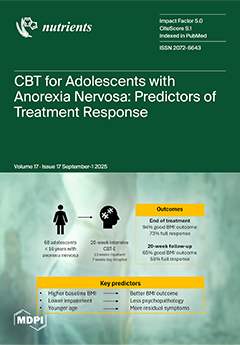Background: Cardiovascular disease (CVD) is the leading cause of mortality in obese patients with type 2 diabetes mellitus (T2DM). Conventional biomarkers often fail to detect early endothelial dysfunction and oxidative stress. Haptoglobin (Hp), an acute-phase protein with antioxidant and hemoglobin-binding properties, may indicate vascular injury. While plasma Hp (pl-Hp) reflects systemic inflammation, urinary Hp (u-Hp) could signal renal and microvascular damage. We hypothesize that elevated u-Hp and altered pl-Hp levels are associated with increased oxidized LDL and may serve as sensitive indicators of early vascular injury, thereby identifying obese patients with T2DM at higher cardiovascular risk. This study aims to investigate the associations between u-Hp, pl-Hp, and oxidized LDL (ox-LDL) in obese patients with T2DM, and to evaluate the potential role of Hp as an early biomarker of cardiovascular risk in this high-risk population.
Methods and Results: The study included 57 patients with T2DM (mean age 61 ± 10 years, HbA1c 8.66 ± 1.60%, and BMI 35.15 ± 6.65 kg/m
2). Notably, 95% of the patients had hypertension, 82% had dyslipidemia, and 59% had an estimated glomerular filtration rate (eGFR) < 60 mL/min/1.73 m
2. Pl-Hp and u-Hp concentrations, as well as ox-LDL levels, were assessed using an enzyme-linked immunosorbent assay (ELISA). Correlations and multivariate regression analyses were employed to investigate the associations between Hp, ox-LDL, and clinical cardiovascular risk factors. Pl-Hp was positively correlated with ox-LDL (r = 0.358,
p < 0.006) and negatively correlated with C-reactive protein (CRP) (r = −0.364,
p < 0.013), while u-Hp correlated positively with HbA1C and apoB levels (r = 0.298,
p < 0.030 and r = 0.310,
p < 0.021, respectively). Multivariate analysis indicated that pl-Hp, but not u-Hp, was independently associated with ox-LDL (β = 0.536,
p < 0.027) after adjusting for potential confounding factors, including age, gender, BMI, HbA1c, liver enzymes, hs-CRP and creatinine. The Stepwise analysis identified IL-6 as the most significant predictor of cardiovascular disease risk, suggesting its pivotal role in subclinical vascular inflammation among obese individuals with T2DM. Furthermore, the significant positive association between pl-Hp and ox-LDL was stronger in patients with declining renal function as expressed by the estimated glomerular filtration rate (eGFR) (eGFR < 30 mL/min/1.73 m
2: β = 2.173,
p < 0.031 and eGFR 30–59 mL/min/1.73 m
2: β = 1.318,
p < 0.002). This association also appeared in early and low-normal ranges of serum albumin: creatinine ratio (s-ACR) (s-ACR < 0.2714 mg/mmol: β = 2.304,
p < 0.005 and s-ACR 0.2714–0.3649 mg/mmol: β = 1.000,
p < 0.041), suggesting that pl-Hp and ox-LDL rise before overt kidney damage. Elevated IL-6 (≥32.93 pg/mL) further strengthened this link (β = 1.037,
p < 0.005), highlighting the role of inflammation in amplifying oxidative stress and acute-phase responses.
Conclusions: Taken together, these findings emphasize the interconnected contributions of renal impairment, inflammation, and oxidative stress to vascular injury. While these results need to be confirmed in larger prospective longitudinal studies, monitoring pl-Hp levels in conjunction with inflammatory and kidney function markers could be a sensitive and non-invasive way to identify early CVD risk in high-risk groups, such as obese patients with T2DM.
Full article






